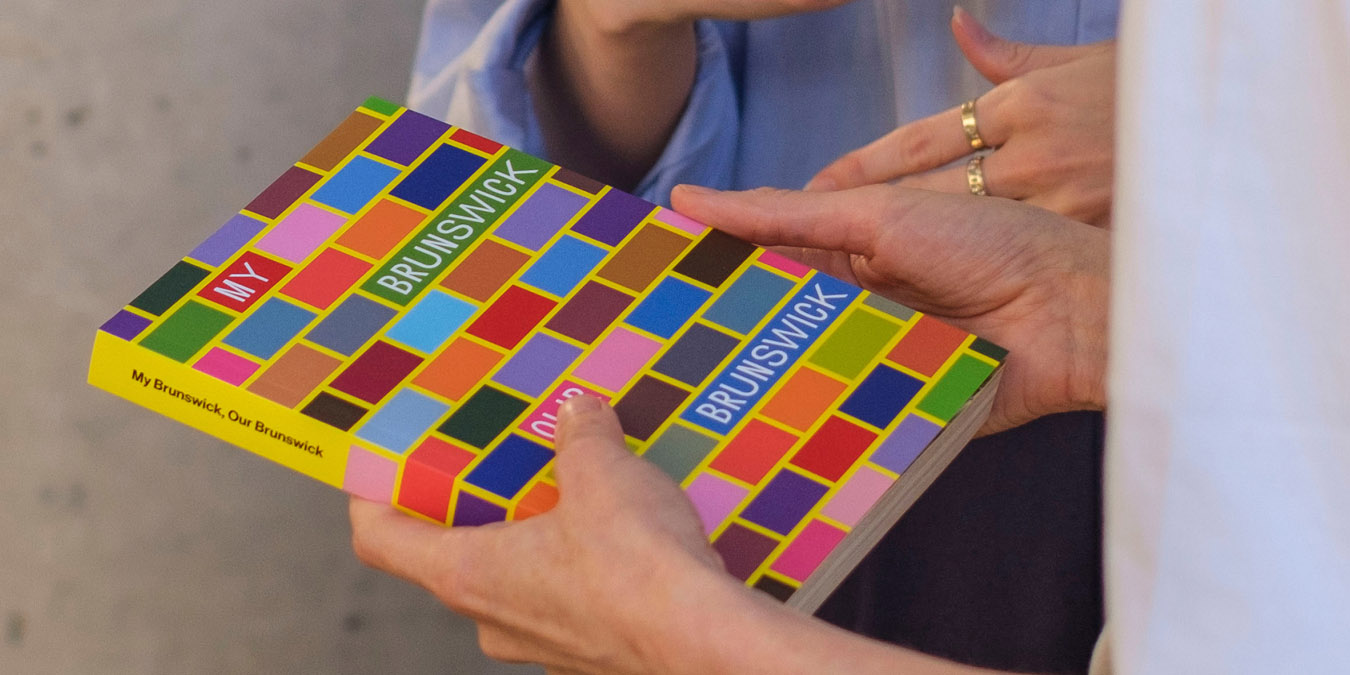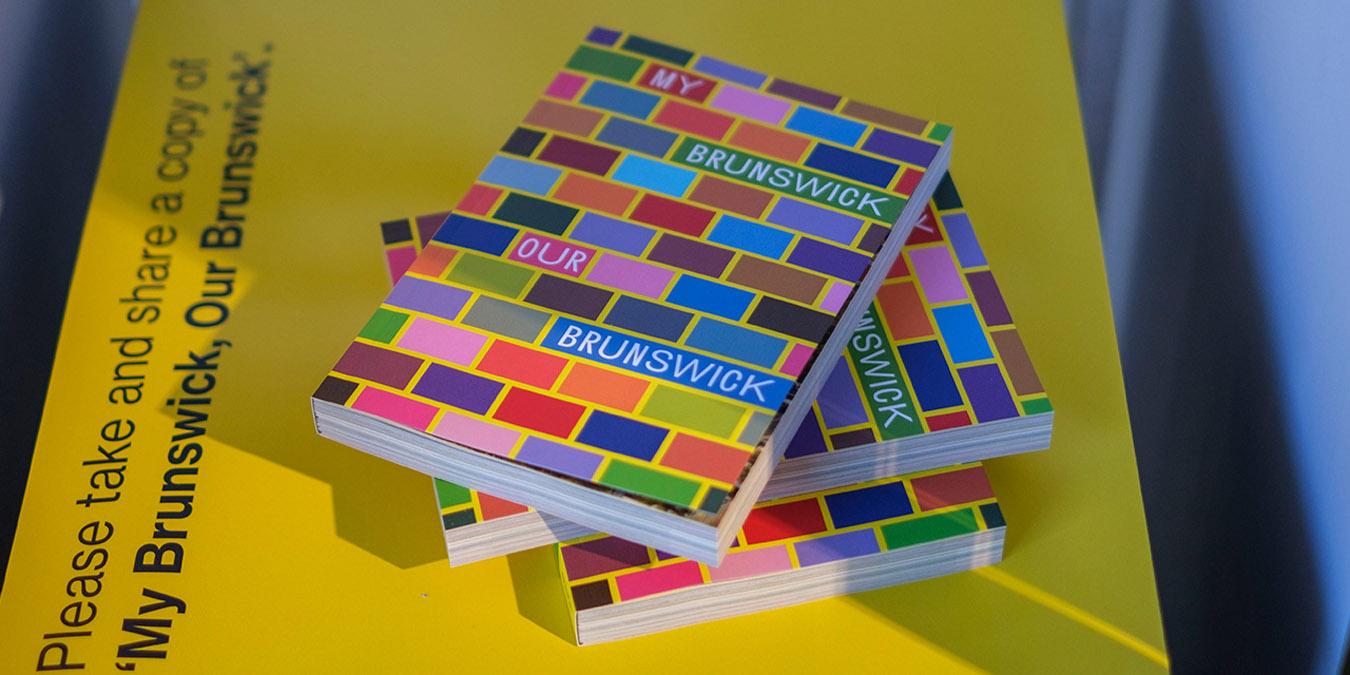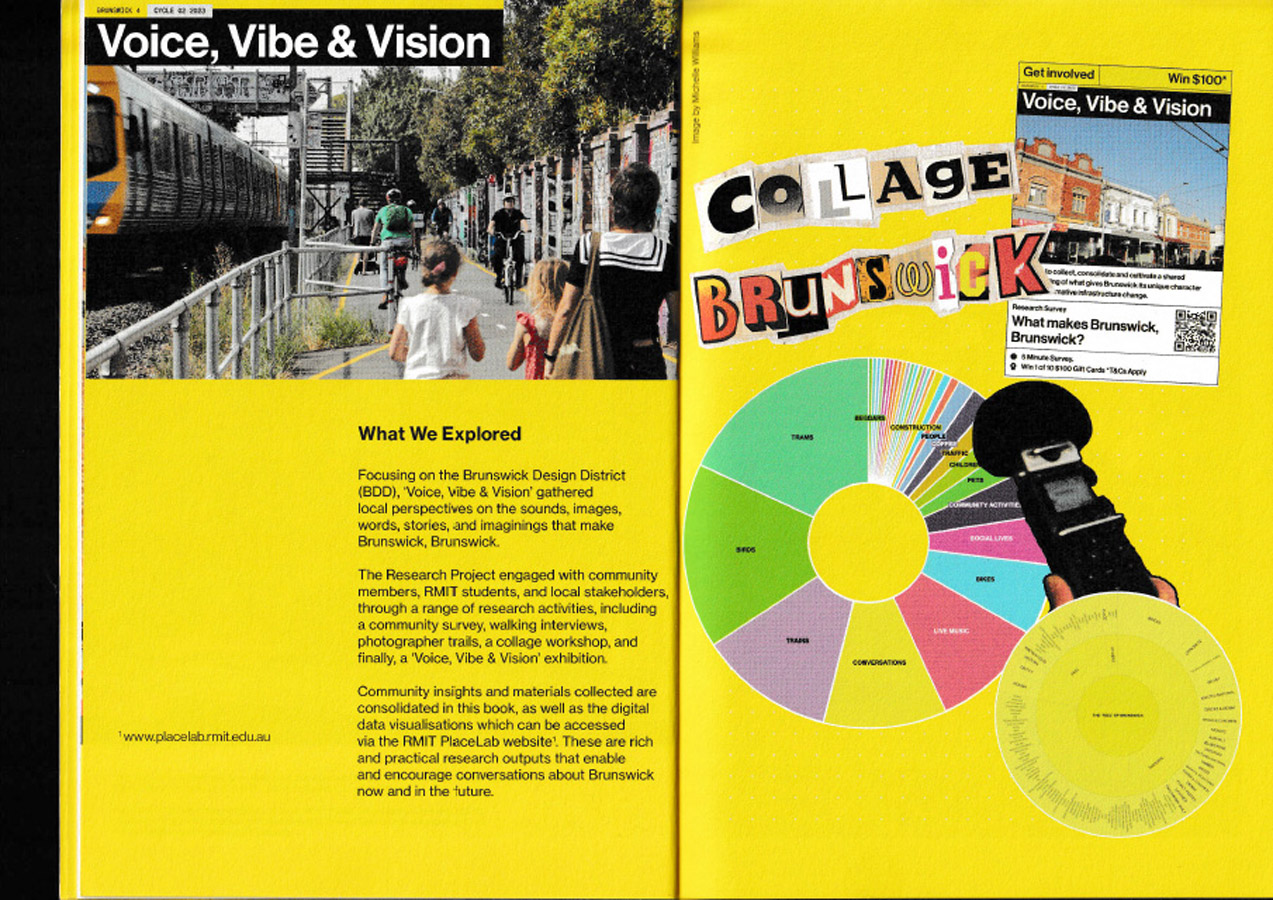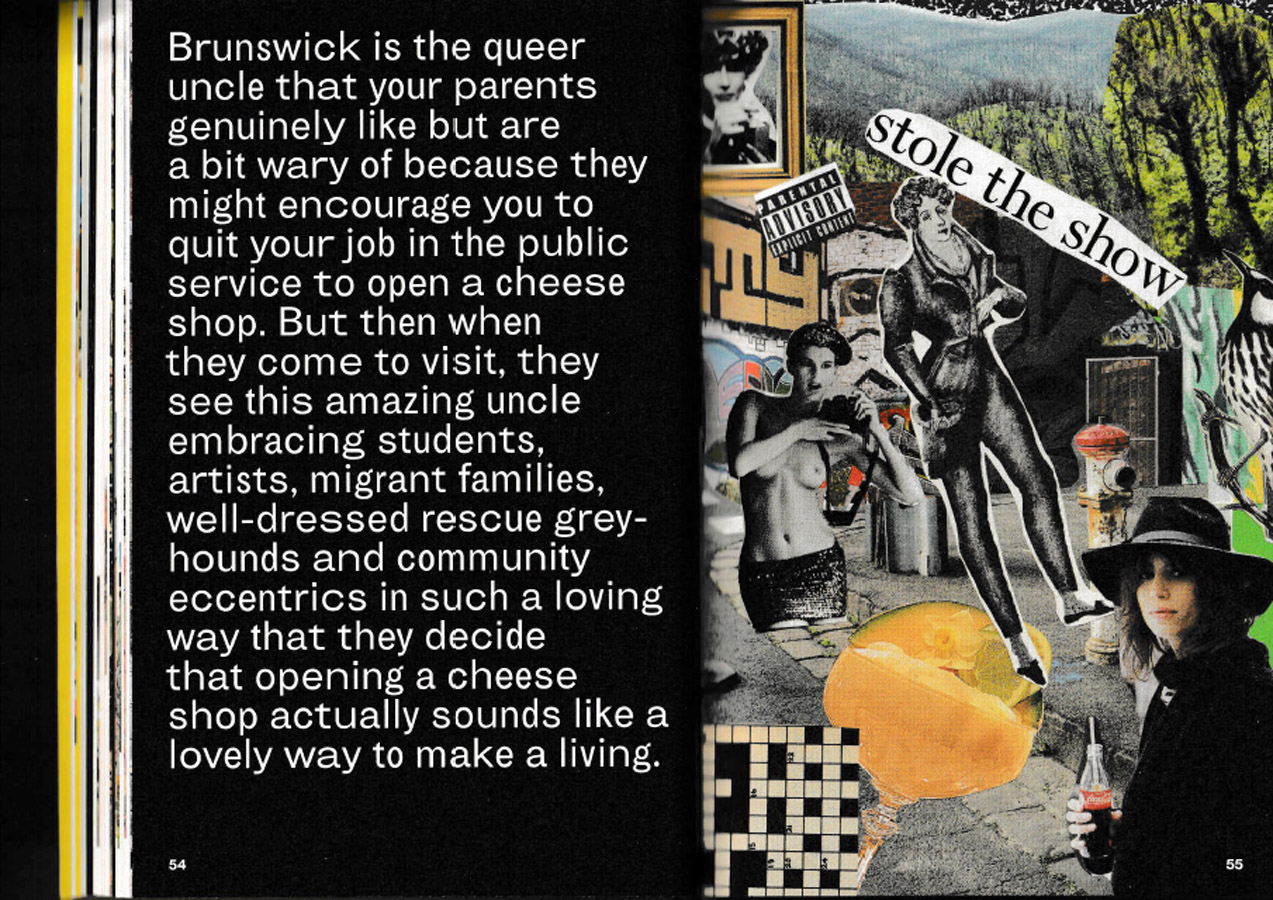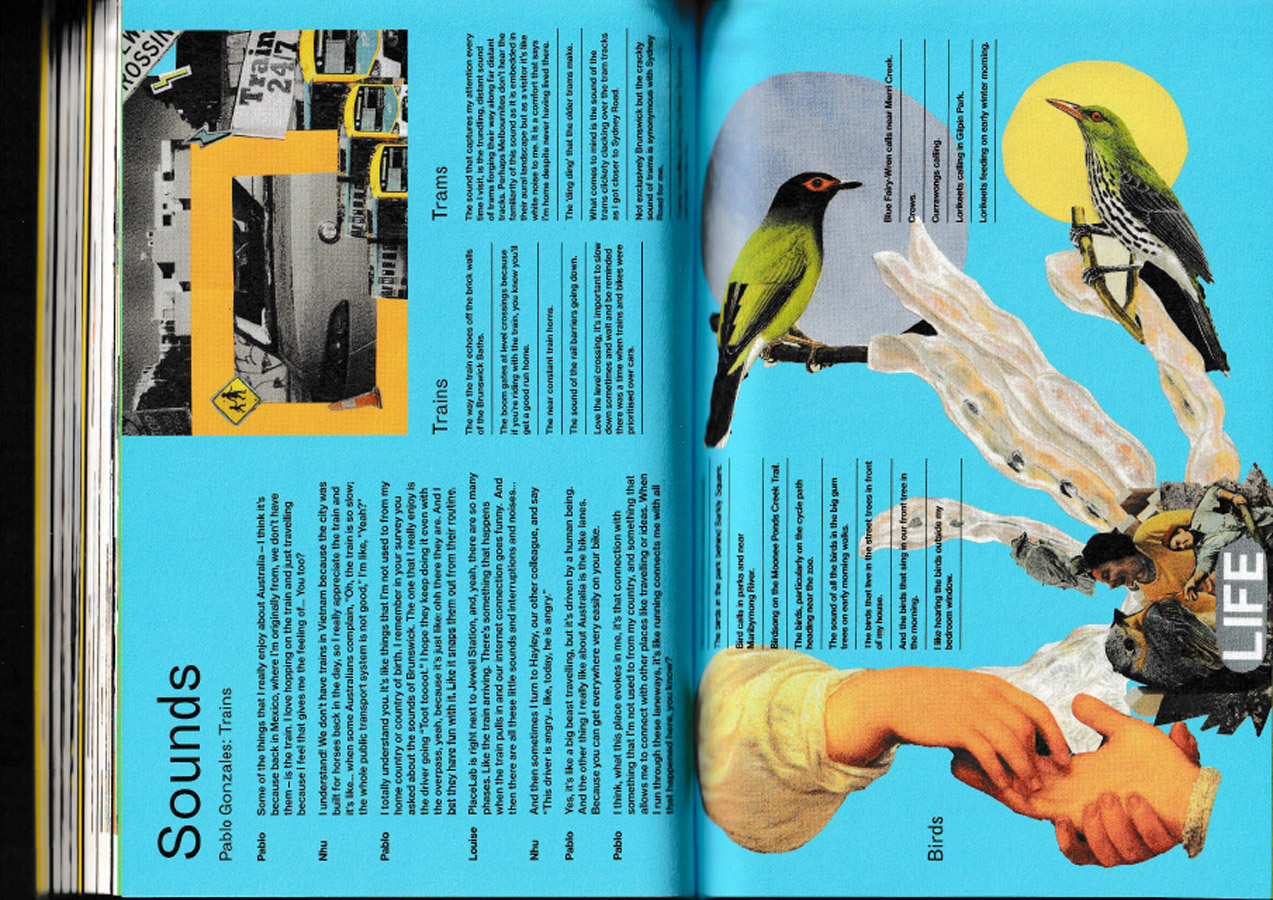I approached the design of this book with meticulous care to preserve the original data (collected by RMIT PlaceLab) and its sentiments as much as possible, trying to avoid over-designing (and possibly undermining) the words of Brunswick locals. A significant challenge emerged in organising these rich stories that were handed over as raw qualitative data, into a coherent book structure that could authentically represent them. In response, the book is divided into three sections that capture the multifaceted voices (Voice), atmospheres (Vibes), and aspirations (Visions) of the Brunswick community.
The book is not meant to be read linearly; readers can open it to any section and dive in, much like exploring Brunswick itself. While the book follows overarching themes, it is interspersed with unique quirks that reflect the community’s distinct personality. In these sections, the book rotates to a horizontal format, showcasing humorous anecdotes and love notes to Brunswick and its subcultures collected during the research surveys. The book also showcases imagery and typography from Brunswick creatives. It was crucial to me that every element—text, type, and image—was crafted by Brunswick locals, for Brunswick locals. You will notice a number of collages in the book that were produced in a workshop I hosted for locals to create their own imagery (this was in partnership with RMIT PlaceLab, Merribek City Council and collage studio, That Paper Joint).
Expertly printed by E-Plot in Melbourne, the finished book exceeded expectations, both in design and functionality. It serves as a valuable tool for Brunswick community stakeholders and offers locals a lasting snapshot of a moment in time to look back on for years to come.

